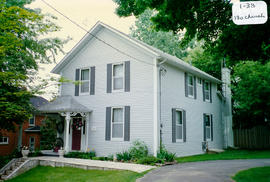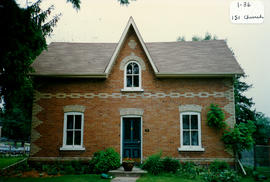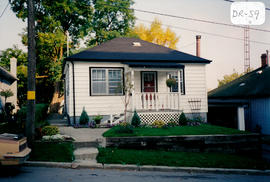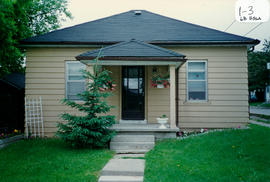130 Church Street - The George Green House
- CA BWGPL GJ-HB-2017-03-18-10
- Item
- 1996
Part of George Jackson fonds
The George Green House is a corner building located at 130 Church Street. It was built in the Gothic Revival style in the 1890’s. Originally, there was a barn located in the rear yard. The two-storey, two-bay house has a one-storey kitchen addition at the rear. It also has a rectangular plan, a side hall, and narrow window openings with high floor to ceiling heights. The building has a medium-pitched, gable roof. An asymmetrical façade has an open, covered, entrance porch with a hip roof that is raised slightly above grade. The porch roof is supported on turned posts with decorative, ‘gingerbread’ trim. There is a Regency entrance door with a transom and sidelights. The double-hung windows are not original. Plain, wood trim and sills still remain. The house has wood frame construction, wood shiplap siding, a stone foundation, and a cellar under the main portion of the house. The original siding was stucco and the chimney and shutters are later additions. According to the 2000 inventory, the house is in good condition with some original features. (1, 3)
George Jackson










